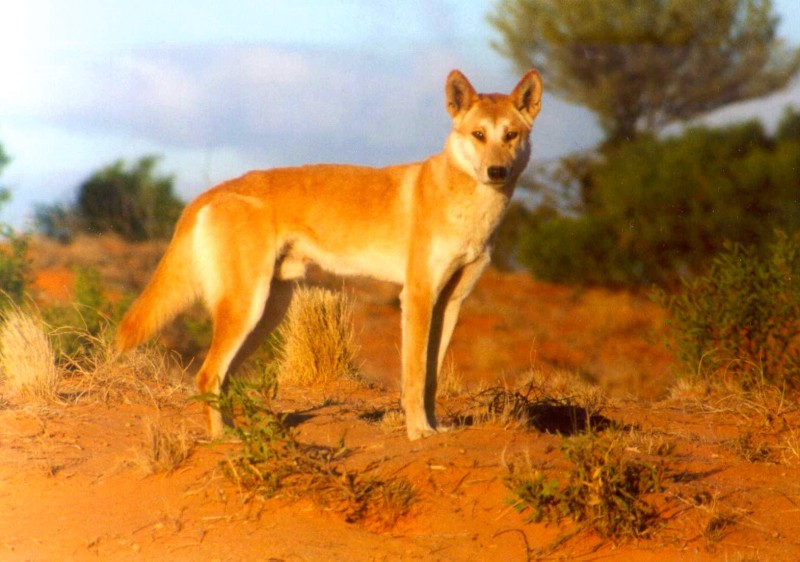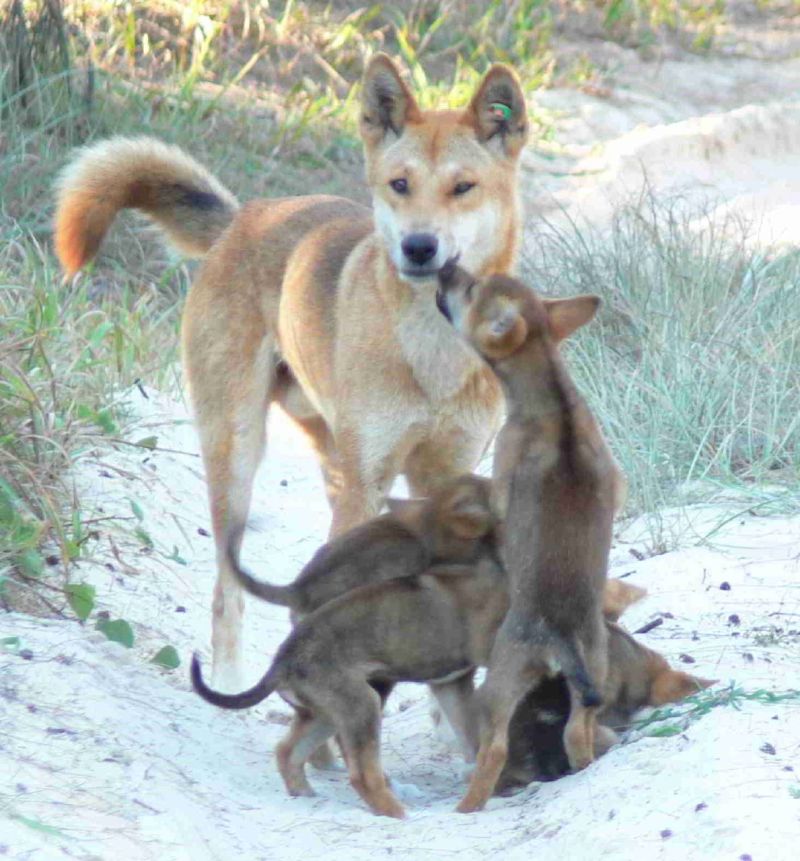Colours
Distinguishing features
The fur of an adult dingo is short and soft, bushy on the tail, and varies in thickness and length depending on the climate. The fur colour is mostly sandy to reddish brown, but can include tan patterns and sometimes be black, light brown, or white. Completely black dingoes might have been more prevalent in Australia in the past, but have only been rarely sighted in recent times. They are now more common in Asia.
Most dingoes are at least bi-coloured, with small, white markings on the chest, muzzle, tag, legs and paws being the most common feature. In the case of reddish individuals, there can be small, distinctive, dark stripes on the shoulders. All other colours and colour-patterns belong to hybrids having been crossbred with domestic dogs. (Wikipedia)
Size
- Up to 60 cm (Shoulder height)
- Up to 154 cm (Nose to tip of tail)
Weight
- Up to 25 kg
Synonyms
Distribution
Distribution and habitat preferences
Originally, the dingo was suspected to have been introduced to Australia in the Pleistocene by Aborigines, which led to confusion concerning the dingo's nomenclature. Today, the most common theory is that the dingo arrived in Australia about 4,000 years ago. �
Today, dingoes live in many diverse habitats, including the snow-covered mountain forests of eastern Australia, the deserts of Central Australia, and Northern Australia's tropical forest wetlands. The absence of dingoes in many parts of the Australian grasslands is probably due to human persecution. (Wikipedia)
Chronotypes
Behaviour
Compared to most domestic dogs, the bark of a dingo is short and monosyllabic, and is rarely used.
Dingoes have three basic forms of howling (moans, bark-howls and snuffs) with at least 10 variations. Usually, three kinds of howls are distinguished: long and persistent, rising and ebbing, and short and abrupt. (Wikipedia)
Diet
About 170 species (from insects to buffalo) have been identified as part of the dingo's diet. In general, livestock seems to make up only a small proportion of their diet.
In continent-wide examinations, 80% of the diet of wild dogs consisted of 10 species: red kangaroo, swamp wallaby, cattle, dusky rat, magpie goose, common brushtail possum, long-haired rat, agile wallaby, European rabbit and the common wombat. This narrow range of major prey indicates these wild dogs are rather specialised, but in the tropical rainforests of northeastern Australia, dingoes are supposed to be opportunistic hunters of a wide range of mammals. In certain areas, they tend to specialise on the most common prey, with a preference for medium- to large-sized mammals. Their consumption of domestic cats has also been proven. Non-mammalian prey is irregularly eaten and makes up only 10% of the dingo's diet. Big reptiles are only rarely captured, at least in eastern Australia, although they are widespread. It is possible that especially large monitor lizards are too defensive and well-armed, or they are simply able to flee fast enough into dens or climb trees. (Wikipedia)


